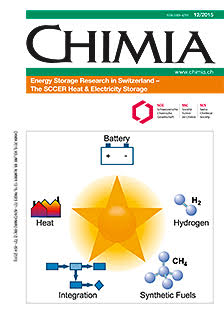Hydrogen Storage in the Carbon Dioxide – Formic Acid Cycle
DOI:
https://doi.org/10.2533/chimia.2015.746Keywords:
Aqueous solution, Carbon dioxide, Fe, Formic acid, Homogeneous catalysis, Hydrogen storage, Phosphine ligands, RuAbstract
This year Mankind will release about 39 Gt carbon dioxide into the earth's atmosphere, where it acts as a greenhouse gas. The chemical transformation of carbon dioxide into useful products becomes increasingly important, as the CO2 concentration in the atmosphere has reached 400 ppm. One approach to contribute to the decrease of this hazardous emission is to recycle CO2, for example reducing it to formic acid. The hydrogenation of CO2 can be achieved with a series of catalysts under basic and acidic conditions, in wide variety of solvents. To realize a hydrogen-based charge-discharge device ('hydrogen battery'), one also needs efficient catalysts for the reverse reaction, the dehydrogenation of formic acid. Despite of the fact that the overwhelming majority of these reactions are carried out using precious metals-based catalysts (mainly Ru), we review here developments for catalytic hydrogen evolution from formic acid with iron-based complexes.Downloads
Published
2015-12-16
Issue
Section
Scientific Articles
License
Copyright (c) 2015 Swiss Chemical Society

This work is licensed under a Creative Commons Attribution-NonCommercial 4.0 International License.
How to Cite
[1]
Chimia 2015, 69, 746, DOI: 10.2533/chimia.2015.746.







